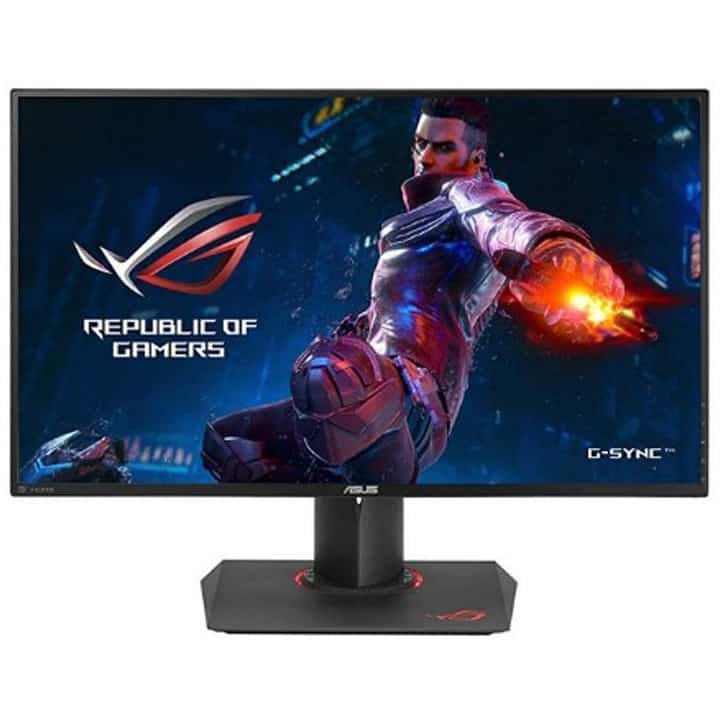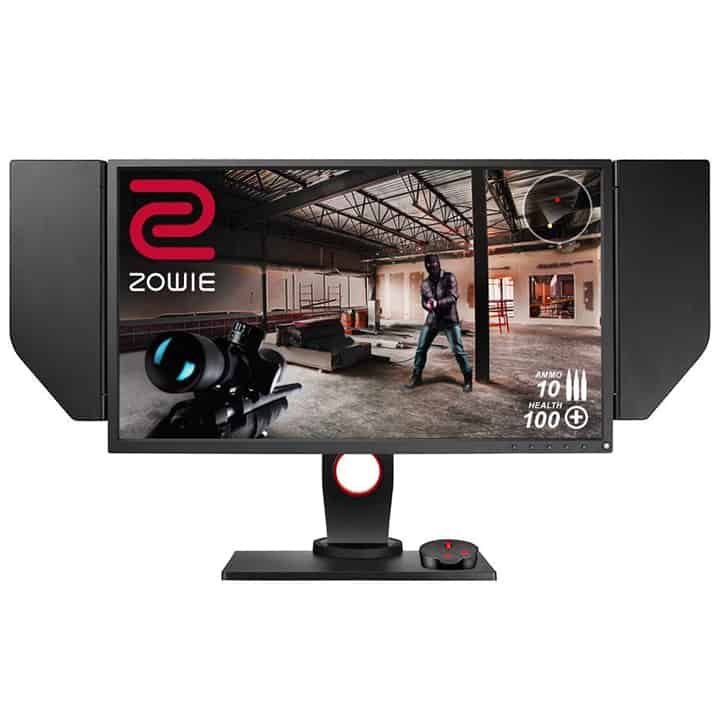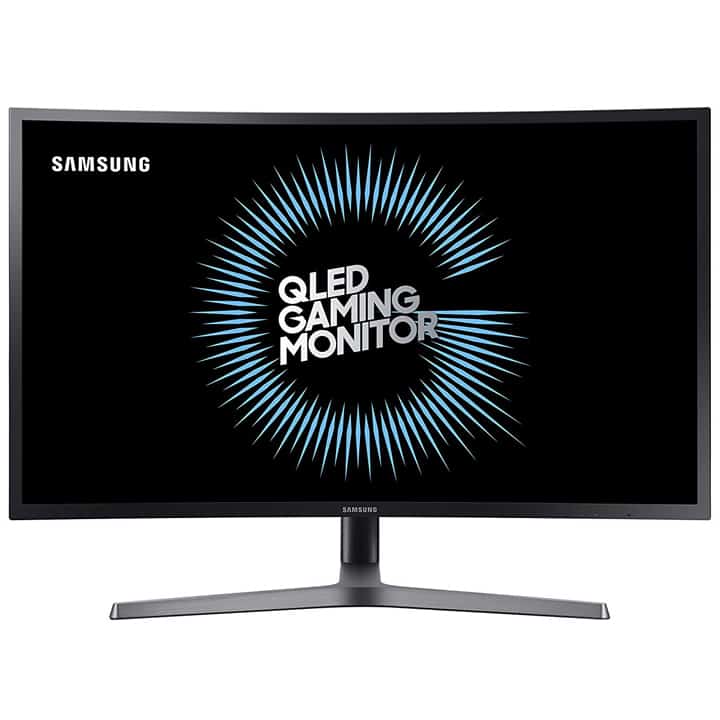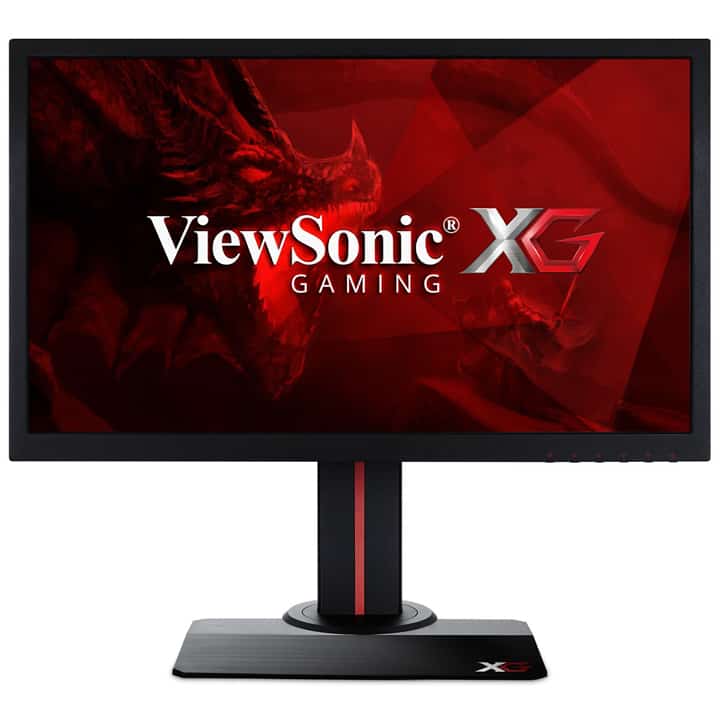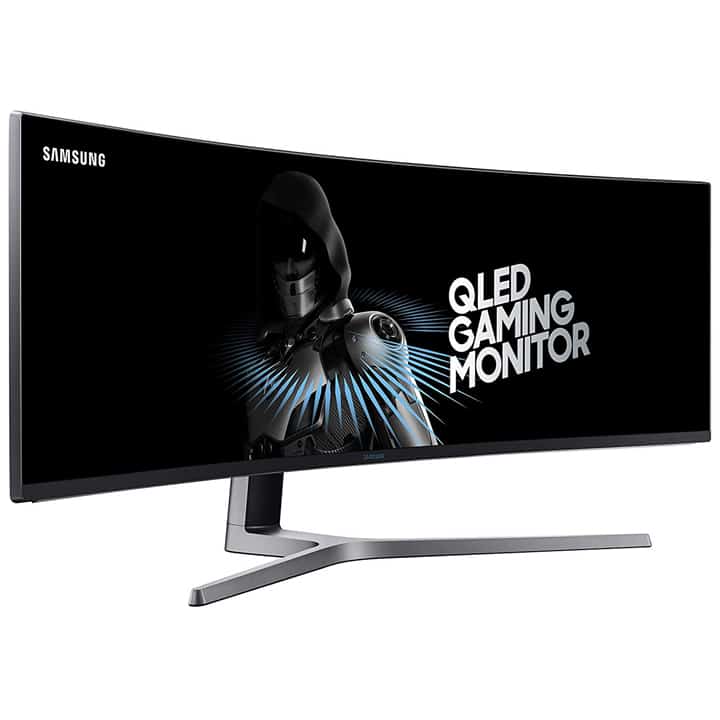No matter how powerful your gaming PC is, your monitor will always have the biggest impact on your gaming experience. It doesn’t matter if you can max out The Witcher 3 at 4K and 60 FPS if your monitor has poor color reproduction. And it doesn’t matter if you’re pushing Overwatch at over 200 FPS if your gaming display is limited to a mere 60 Hz.
Your monitor is very literally your window into the world of the game you’re playing, and like a real-life window, its size and clarity will determine what you see.
The quality of your gaming experience will be limited first by your monitor, and then by your hardware. Even if you aren’t buying a super high-end gaming PC now, there may still be benefits to buying a more future-proof monitor to account for upgrades or your next build. In general, the farther you shoot now, the longer you’ll remain happy with your selection and not feel the need to replace it.
Each of the monitors below have been selected with this goal in mind: as displays you’ll be happy to use for years to come. Whether you need the best 144Hz monitor, one with G-Sync, or even just a budget option, we have you covered.
best G-Sync monitor
ASUS ROG Swift PG279QZ Gaming Monitor
- Screen size: 27-inch
- Resolution: 1440p QHD (2560x1440)
- PPI: ~108
- Refresh rate: 165 Hz
- VRR: G-Sync
- Response time: 4 ms
- Panel type: IPS
eSports favorite
BenQ Zowie XL2540 Gaming Monitor
- Screen size: 24.5-inch
- Resolution: 1080p HD (1920 x 1080)
- PPI: ~90 PPI
- Refresh rate: 240 Hz
- VRR: FreeSync
- Response time: 1 ms
- Panel type: TN
great color reproduction
Dell Ultrasharp U2718Q
- Screen size: 27-inch
- Resolution: 4K Ultra HD (3840 x 2160)
- PPI: ~163
- Refresh rate: 60 Hz
- VRR: None
- Response time: 5 ms
- Panel type: IPS
best HDR gaming monitor
Samsung CHG70 Series Curved Gaming Monitor
- Screen size: 27-inch
- Resolution: 1440p QHD (2560 x 1440)
- PPI: ~108
- Refresh rate: 144 Hz
- VRR: FreeSync 2
- Response time: 1 ms
- Panel type: VA
best budget
ViewSonic XG2402 Gaming Monitor
- Screen size: 24-inch
- Resolution: 1080p HD (1920 x 1080)
- PPI: ~91
- Refresh rate: 144 Hz
- VRR: FreeSync
- Response time: 1 ms
- Panel type: TN
ultimate ultrawide gaming
Samsung CHG90 Series Curved Gaming Monitor
- Screen size: 49-inch (Ultrawide)
- Resolution: Ultrawide 1080p (3840 x 1080)
- PPI: ~90
- Refresh rate: 144 Hz
- VRR: FreeSync 2
- Response time: 1 ms
- Panel type: VA
Table of Contents
1. ASUS ROG Swift PG279QZ Gaming Monitor
ASUS gives us the best G-Sync monitor (and best overall)

- Screen size: 27-inch
- Resolution: 1440p QHD (2560x1440)
- PPI: ~108
- Refresh rate: 165 Hz
- VRR: G-Sync
- Response time: 4 ms
- Panel type: IPS
- Stellar refresh rate and low input lag
- IPS panel allows better viewing angles and superior color reproduction
- High price
- Poor out-of-box color accuracy
The ASUS ROG Swift PG279QZ (try saying that ten times fast) is our pick for best overall gaming monitor thanks to its incredibly well-balanced specs.
First and foremost, let’s talk about that impressive 165 Hz refresh rate. Despite this monitor using an IPS panel, it’s managed to push beyond 144 Hz and provide an even smoother gaming experience than previously thought possible on an IPS panel. While 165 Hz vs 144 Hz will ultimately be a marginal difference, it should still cut down on input lag by just a little bit more than it would otherwise.
Besides the refresh rate, you also have the aforementioned IPS panel. This means you’ll have great viewing angles and colors, though some have reported poor out-of-the-box color reproduction that needed to be fixed through calibration. After calibration, though, this monitor provides a truly excellent viewing experience alongside gaming caliber.
In terms of extras, you have support for G-Sync, a ton of adjustment options, and little things like ASUS Eye Care. Impressively for an IPS panel, the ROG Swift even manages a 4 ms response time versus the 5+ ms exhibited by many other IPS displays, making it just a little bit better for competitive gamers out there.
2. BenQ Zowie XL2540 Gaming Monitor
The best 1080p gaming monitor is an eSports favorite

- Screen size: 24.5-inch
- Resolution: 1080p HD (1920 x 1080)
- PPI: ~90 PPI
- Refresh rate: 240 Hz
- VRR: FreeSync
- Response time: 1 ms
- Panel type: TN
- Insanely high refresh rate and low input lag
- Plentiful adjustment options and control
- High price
- TN panel means poorer viewing angles and color reproduction
If you’re an eSports gamer-- that is, someone who makes a living off of this-- you can go ahead and skip the rest of the article. The BenQ Zowie XL2540 is unquestionably the best eSports gaming monitor, and the best 1080p gaming monitor overall.
Let’s start with the refresh rate: 240 Hz. No matter how high you push your game’s frames, chances are you aren’t going to break 240 FPS, if it even supports framerates that high. This, combined with the 1 ms response time and excellent manufacturing, results in a display that provides the lowest possible input lag on the market.
If you still aren’t good at your title of choice while playing at 200+ FPS and using this monitor… there’s no one else to blame. As long as you aren’t a John, this monitor will give you the greatest possible competitive gaming experience out of any other monitor on the market, no question.
Unfortunately, the BenQ Zowie does come with a few downsides. Namely, since it uses a TN panel, the viewing angles and colors aren’t going to pop like they would on an IPS or VA display. This is to be expected, but still worth noting for those of you out there who want the best possible visuals: this isn’t the monitor for that.
While this monitor doesn’t support G-Sync, it does support FreeSync. With the 240 Hz refresh rate in mind, it may be the best FreeSync monitor there is. Even without an AMD GPU, though, you’re still very unlikely to encounter any kind of screen tearing thanks to the insanely high refresh rate. We recommend an FPS cap if you start pushing frames higher than 240 FPS in any of your games to ensure that doesn’t happen.
3. Dell Ultrasharp U2718Q
With low latency and great color reproduction, this is the best 4K gaming monitor

- Screen size: 27-inch
- Resolution: 4K Ultra HD (3840 x 2160)
- PPI: ~163
- Refresh rate: 60 Hz
- VRR: None
- Response time: 5 ms
- Panel type: IPS
- Excellent color reproduction and viewing angles thanks to IPS panel
- Despite being 4K and IPS, enjoys low input lag
- High price
- HDR implementation is meh
If you value resolution and visuals over everything else, this is the monitor for you.
The Dell Ultrasharp line is lauded for its stellar color reproduction and resolution among professional designers. If it’s good enough for the pros, it’s definitely good enough for gamers thanks to its stellar resolution and overall visuals; that’s ultimately what makes this our best 4K gaming monitor after all. It does feature HDR, but like most HDR monitors in 2019, it’s mediocre at best. This tech just hasn’t quite gotten there on PC yet.
While this monitor doesn’t support VRR tech, like FreeSync or G-Sync, you’re still very unlikely to encounter screen-tearing. After all… what monster of a system are you running where you can push above 4K 60 FPS at maximum settings? If you do encounter screen tearing issues, we recommend setting an FPS cap around 61-65 FPS to alleviate these problems. You can also run in windowed borderless mode which will provide triple-buffering at the cost of slight input latency.
In any case, this monitor should satisfy even the greatest graphics snobs among you. Despite being only 60 Hz and having a 5 ms response time, it shouldn’t feel particularly laggy either, especially if you’re sticking mainly to eye-candy single-player titles instead of eSports games.
4. Samsung CHG70 Series Curved Gaming Monitor
The best HDR gaming monitor is ahead of the curve

- Screen size: 27-inch
- Resolution: 1440p QHD (2560 x 1440)
- PPI: ~108
- Refresh rate: 144 Hz
- VRR: FreeSync 2
- Response time: 1 ms
- Panel type: VA
- Superb color reproduction and HDR picture support
- Doesn’t sacrifice gaming performance for HDR
- High price, even on sale
Let’s say you’ve experienced HDR on a TV and you really want that experience on PC. While PC HDR hasn’t quite reached the same level of support or quality, the Samsung CHG70 will still provide the best HDR experience out of every gaming monitor on the market. This means even the brightest or darkest scenes will be displayed with better clarity than any other monitor on this list.
In addition to the much-better-than-average HDR support on this monitor, you also have a great 144 Hz refresh rate, 1 ms response time, and FreeSync 2 support. While VA panels aren’t always known for providing great experiences, Samsung’s VA-powered monitors have been doing a good job of pushing the tech further than anyone thought possible, making us happy to recommend this as a gaming monitor.
5. ViewSonic XG2402 Gaming Monitor
ViewSonic offers the best budget gaming monitor on this list

- Screen size: 24-inch
- Resolution: 1080p HD (1920 x 1080)
- PPI: ~91
- Refresh rate: 144 Hz
- VRR: FreeSync
- Response time: 1 ms
- Panel type: TN
- Low input lag and high 144 Hz refresh rate
- Plentiful adjustment options despite cheaper price point
- TN panel hurts color reproduction and viewing angles
Looking at all of these $400+ monitors probably has some of you clutching your wallets and sweating. Don’t worry-- you can still get a great gaming experience without totally breaking the bank.
Meet the ViewSonic XG2402, which is our pick for best budget gaming monitor. It usually retails for under $240, but despite this (relatively) low price point, it offers a great gaming experience. This means a 144 Hz refresh rate, a 1 ms response time, and plentiful adjustment options.
The usual downsides of TN panels still apply here, unfortunately. At this price point-- and for those of you who prioritize a gaming experience above all else-- can you really complain, though?
6. Samsung CHG90 Series Curved Gaming Monitor
The ultimate ultrawide gaming experience-- and best curved gaming monitor-- courtesy of Samsung

- Screen size: 49-inch (Ultrawide)
- Resolution: Ultrawide 1080p (3840 x 1080)
- PPI: ~90
- Refresh rate: 144 Hz
- VRR: FreeSync 2
- Response time: 1 ms
- Panel type: VA
- Amazing size, color reproduction, and HDR
- Low input latency and high refresh rate
- The most expensive monitor on this list
- Very few games support Ultrawide
Last, but not least, is the Samsung CHG90, which is easily the best ultrawide monitor on the market.
But also...
Very big. This monitor is essentially the size of 3 24-inch 1080p monitors… if you slapped them together side-to-side and curved them a bit. This provides an unparalleled level of immersion in supported games, allowing you to completely immerse yourself in games like The Witcher 3. Most multiplayer titles, unfortunately, aren’t likely to support a monitor of this size, resulting in either black bars or severe distortion in your peripheral vision.
As a gaming and visual experience, the CHG90 has a lot going for it. There’s the 144 Hz refresh rate, FreeSync 2 support, 1 ms response time, all of which combine to make it one of the best FreeSync monitors on the market. Unfortunately, we do feel the need to emphasize its biggest downside now.
This monitor is going to cost you at least $1,000, even more if it’s not on sale. Unfortunately, the best possible Ultrawide gaming experience comes at a great cost to your wallet.
Read More: Best Graphics Card for Gaming in 2019
How To Pick The Best Gaming Monitor For You
If you’ve ran through our picks and aren’t sure which monitor to choose, don’t worry: we have you covered. We’re going to walk through the most important factors to take into consideration when buying a monitor to make it easier to pick one that’s right for you.
Size, Resolution, and PPI
Monitor screen size is measured diagonally, from corner-to-corner. So a 24-inch monitor isn’t 24 inches wide, it’s 24 inches diagonal. Its actual width is right around 20-to-21 inches. If you want to more easily visualize or measure how a display may fit on your wall or desk, finding the actual width may help you figure this out.
Resolution is a measure of pixels. Specifically, the number of pixels on the display that will make up the full image. The bigger the display, the more pixels you will need to prevent visible pixelation. In general, 1080p at 24 inches (for standard widescreen displays) is understood to be the recommended resolution for that size, as is 1440p for 27 inches. 4K is common in both 27-inch and larger displays, but usually isn’t seen in smaller displays for good reason.
Finally, let’s talk about PPI, or Pixels Per Inch. The higher this number is, the better. For your average desktop usage scenario, you’ll want at least 85 or so to avoid blurry text, images, and games. We’ve provided PPI measurements in our reviews above to better indicate the level of image quality you can expect from these monitors in relation to one another, as opposed to relying solely on resolution numbers.
Refresh rate, VRR technology, and response time
Refresh rate is measured in Hertz and counts the number of times the image on the screen “refreshes” in a single second. While not the same as Frames Per Second (FPS) in video games, higher refresh rates will allow your display to output higher in-game framerates, leading to a great increase in smoothness. Many eSports pros swear by higher refresh rate displays as a competitive advantage for this reason.
Your average modern monitor will have a 60 Hz refresh rate. While this does provide a smooth image, it still doesn’t match the responsiveness of 144 Hz or even 240 Hz monitors. For truly competitive gamers, a high refresh rate monitor is a must-have, no questions asked.
VRR stands for Variable Refresh Rate, and it refers to technologies that enable displays to switch refresh rates on the fly. These include DisplayPort Adaptive-Sync, Nvidia’s G-Sync, and AMD’s FreeSync. These technologies all function in fundamentally the same way: the prevent screen tearing by changing the refresh rate of the monitor (or skipping in-game frames) to match the in-game framerate.
If that sounds familiar to you, you may have heard of V-Sync. V-Sync also manipulates in-game frames to prevent visual screen tearing, but at the cost of a performance penalty and increased input latency. Due to the manner in which V-Sync works, it also greatly worsens performance dips when enabled.
With VRR technology, you get the benefits of V-Sync (a smoother gaming experience without visible screen tearing) without its input latency or performance downsides. It is especially recommended when you are running games significantly below or significantly above 60 FPS, since these are the scenarios in which you will most likely experience screen tearing.
Response time measures the amount of time it takes for a pixel to change color, usually Gray-To-Gray (G2G). A good number for this is considered to be 5 ms, while lower numbers are considered better and higher numbers are considered worse. However…
Response time isn’t always the most accurate way to measure latency. Specifically, many people mistakenly believe that response time directly corresponds to input lag, which it does not. There are scenarios where a display with a lower response time will actually have the same or worse input lag when compared to a display with a higher response time…because there are many other factors to take into consideration.
The biggest determining factor of input lag will almost always be refresh rate. At 5 ms response time and below, the gains will become more and more marginal without corresponding refresh rate boosts.
Fortunately, we’ve verified through our own tests and trusted sources like DisplayLag and RTINGS that each of the monitors we’ve included in this roundup will provide low input lag and a great gaming experience.
Panel type
Panel type refers to the type of panel used in the display. In monitors, there are three main types of panel being used, each with its own pros and cons, that you need to consider when buying a gaming display.
TN panels
- Higher refresh rates and lower response times
- Suited for competitive gamers
- Poorer viewing angles and color reproduction
IPS panels
- Great viewing angles and color reproduction
- Suited for all gamers and recommended for most
- Not capable of super-high refresh rates (like 240 Hz) and has higher response times
VA panels
- Balances TN and IPS benefits
- ...but doesn’t quite achieve the best of either
HDR
Last up is HDR, or High Dynamic Range. HDR-enabled displays utilize technology that allows for clarity in even the brightest (or darkest) scenes. This technology is most commonly seen alongside 4K in the latest TVs, and has been embraced wholeheartedly in the world of console gaming.
In PC gaming and PC as a whole, it’s seen a much slower adoption, and unfortunately at the time of writing, a much poorer one. Even our best HDR gaming monitor isn’t all that great when compared to the best HDR TVs; of course, the monitor, as a whole, is still worlds better in terms of input lag and your actual gaming experience.
Ultimately, this is probably the least important thing to take into consideration when buying a monitor… at least for now. If you also happen to play the latest and greatest console games (on PS4 and Xbox One specifically), however, an HDR-enabled monitor may very well be worth a buy.
What to prioritize?
Unfortunately, you aren’t going to find a gaming monitor that checks every box for every possible gaming experience. To wrap up this guide, we’re going to explain which things to prioritize depending on your needs.
If competitive gaming is your livelihood, prioritize…
- High refresh rates (TN Panels)
- Low response times
- VRR technology
If you value single-player games and immersion, prioritize…
- Better color reproduction (IPS Panels)
- Higher resolutions and PPI
- VRR technology
If you’re somewhere in-between, prioritize…
- Better color reproduction
- High refresh rates
- Low response times
No matter what kind of gamer you are, you should be able to find the best gaming monitor for you on our list. Comment below and let us know if you need help picking one.

